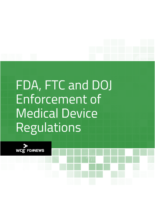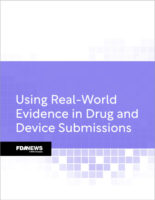
Home » FDA Device Regulations: too Harsh or Just Right?
FDA Device Regulations: too Harsh or Just Right?
Are U.S. medical device regulations too tough? The answer, according to Matthew Grennan and Robert Town, professors of healthcare management at the University of Pennsylvania’s Wharton School, may surprise those critics who view the FDA as hampering innovation.
“We weren’t sure what we would find,” the two tell IDDM of the results of a paper, Regulating Innovation with Uncertain Quality: Information, Risk, and Access in Medical Devices, that examines this question.
Using data from the Millennium Research Group, they focused on the coronary stent market in the U.S. and EU, given the wealth of data and the constant stream of innovative products manufacturers develop.
Grennan and Town acknowledge that the FDA requires more information from manufacturers than its EU counterparts before it will allow a device to go to market. While that may delay access to innovative devices and impose higher entry costs, the data obtained in clinical studies to demonstrate safety and effectiveness can help FDA reviewers weed out underwhelming performers.
Because the EU only requires companies to demonstrate safety, many companies choose to offer their products in those markets, the two say.
From 2004 to 2013, an average 49 percent of stents used in the EU were unavailable in the U.S., according to their research. There were also more stent manufacturers offering their products in EU markets. However, despite the greater choice, “products in the EU experience less usage overall and higher volatility in usage patterns when first introduced,” according to the report.
One problem is that EU consumers have less access to data about devices than those in the U.S. On average, U.S. clinical trials enrolled more than 1,200 patients and lasted three years. In the EU, trials enrolled a third of the patients and were 66 percent shorter. While it could be argued that EU patients have faster access to advanced technologies, they also face a greater risk, given that products are introduced earlier in their lifecycle and with less data backing them, the researchers say.
“For the set of devices on which we have data, we estimate that the U.S. is close to the optimal policy, but the EU is too lax,” the report says.
Would this conclusion hold true for all device types? “It all depends on the tradeoff between access and risk for the device,” Grennan and Town explain. “For a different device with the same level of risk, but a bigger technological benefit relative to the status quo, our model would suggest less premarket testing. On the other hand, if the benefit were similar with more uncertainty, our model would suggest more testing.”
The authors see several avenues for additional research as a result of their conclusions. “One puzzle from the EU-U.S. differences in stents is why products in the EU don’t undergo more voluntary testing, when the consumer benefits from greater certainty seem to be so high. It seems like there is a gap in the value of testing between the private benefit to manufacturers and the public benefit to consumers, and we are actively working on trying to understand what is behind that gap.”
Read the report here www.fdanews.com/07-06-15-grennantown.pdf. — Elizabeth Hollis
Upcoming Events
-
25Apr
-
07May
-
14May
-
30May
